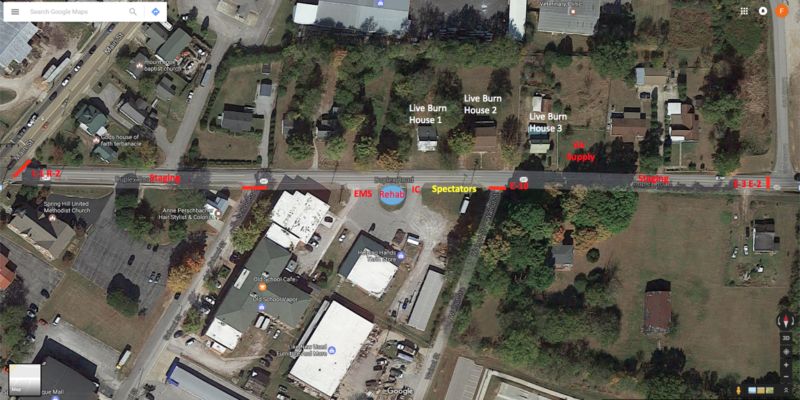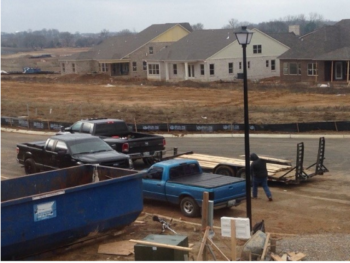Fire Dept. to burn 3 Duplex Road houses in July for training exercises
Houses acquired for Duplex widening project right-of-way
The Spring Hill Fire Department (SHFD) next month will conduct live fire training exercises and conclude with fully involved fires in three houses acquired by the City of Spring Hill as part of the property right-of-way needed for the state to widen Duplex Road (S.R. 247).
The City of Spring Hill has been issued a permit by the Tennessee Department of Transportation (TDOT) allowing for a controlled burn of the three adjacent structures at the addresses 2529, 2531/2533, and 2535 Duplex Road.
Prior to the live burns, the fire department will use the vacant homes for smoke, ventilation, and rescue training, while the Spring Hill Police Department will use them for SWAT training, allowing officers to practice safely going through a dimly lit house in scenarios involving searching rooms for potential armed suspects.
The live burns will occur from 8 a.m. to 2 p.m. on three consecutive Saturdays July 15, 22 and 29. Duplex Road will be shut down from Main Street to Locke Avenue starting at 7 a.m. on each of these days. This will allow all Spring Hill Firefighters on all three shifts to receive live burn training. The same training scenarios will occur on each of these Saturdays, such as starting a fire in a burn barrel in an individual room to allow firefighters to witness how a fire progresses up walls and ceilings, and to navigate through a smoke-filled room. The fire will be extinguished each time, allowing different groups to experience this training exercise.
When each crew has been through this training, between noon and 1 p.m., the structure will become a fully involved fire, allowing firefighters to train in the most extreme firefighting situation. Each home will be burned to the ground in preparation for TDOT’s upcoming widening of Duplex Road. The training also will be recorded by firefighters’ live video helmet cameras.
“This is truly the best training you can offer a fire department, especially the rookie firefighters, because it’s a real working fire without so much of the danger and risk,” said Spring Hill Fire Chief Terry Hood, who has participated in many live burns during his 34 years of firefighting. “These are not controlled gas prop burns, which do not put out the same smoke, heat and fire as a true Class A combustible material burn, yet we will take every possible safety precaution in advance of the live burns to ensure the safety of everyone involved. That’s the number one priority.”
For example, all window and door frames will be prepped so they can be pushed out in case of an emergency. Thermal cameras will be used inside the burning structure to measure the temperature of the fire and ensure firefighters vacate the structure at a safe juncture. Trees have been removed in front of one of the homes to ensure firefighters can easily access the front yard. A lifelike dummy will be used for rescue practice. An air supply refill unit will be onsite to ensure firefighters’ air packs stay filled. There will be a team of fire safety officers on the scene, both inside and outside the house, to ensure firefighters in training are following procedures and taking appropriate precautions.
Power lines and natural gas utilities will be removed from the home by the respective utility providers. SHFD has conducted an environmental study to meet TDOT requirements to secure a state permit for the live burns. EPA requirements also will be met with the removal of all roofing shingles, linoleum flooring, toilets, window glass, and any other materials that can create toxic air pollution when burned.
SHFD has invited neighboring fire departments to take advantage of this optimum training opportunity, including 12 new recruits from Maury County Fire Department, and 15 new recruits from Williamson County Fire & Rescue. New recruits are required to participate in a live burn to ready them to assist with fighting a real-life structure fire in their respective counties. It also allows the departments to practice mutual aid duties.
A crew of off-duty firefighters will be paid overtime to man a fire truck to respond to any fire and medical calls that may occur during the training. If additional trucks are warranted for a call, firefighters in training will be immediately dispatched to assist while Maury and Williamson fire crews shut down the live burn exercise.



